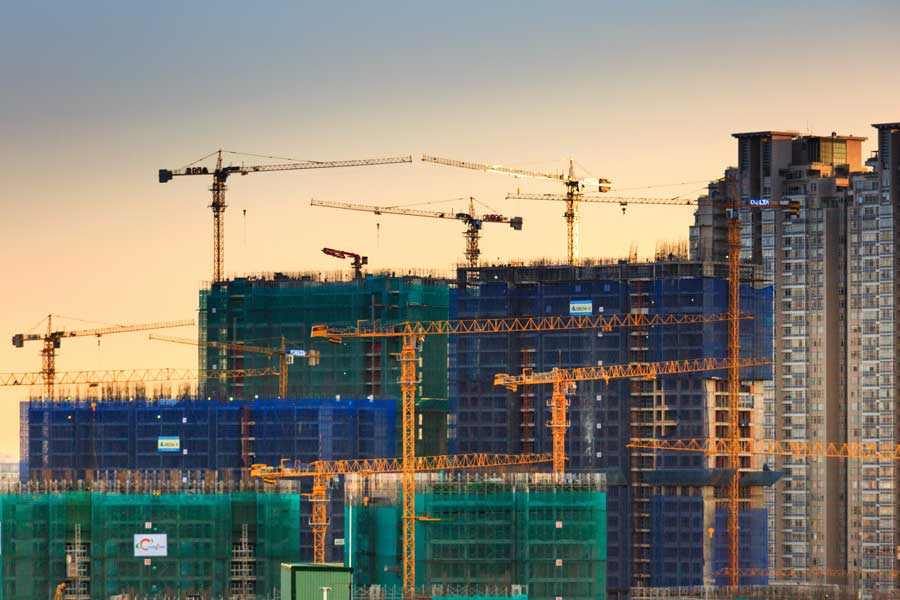
According to CBRE’s new Construction Cost Index, construction costs will rise 14.1% year by the end of 2022 as labour and material costs continue to rise. In 2023 and 2024, escalation should stabilise in the 2%-4% range, in line with historical averages.
Overall material cost inflation is expected to begin slowing by the end of 2022 and return to normal levels by mid-2023. However, given the large number of construction inputs, many of which are frequently subject to geopolitical risks such as tariffs and sanctions, prices for some materials may continue to fluctuate and affect the overall cost of construction.
There are many factors causing the rise in the cost of materials. Costs rise as a result of tariffs, trade disputes, environmental regulations, and shifting consumer preferences. Many projects call for materials like iron, lumber, and steel, all of which have suffered sharp price rises recently.
The price of crude oil increased by 49%, that of lumber by 29%, and that of iron and steel by 14% in just one year. As a result, the overall cost of projects increased by more than 5%. While some businesses collaborate extensively with contractors to save costs during the pre-construction phase, prices change so quickly that once the project begins, the cost estimates may be inaccurate.

The latest Subcontracting Growth Report from Bibby Financial Services (BFS) found that 40% have looked for new raw material suppliers, 25% have secured new suppliers and 24% have renegotiated with existing suppliers. However, 46% have taken no action yet.
The high US costs reflect the impact of significant ongoing supply chain disruption meeting a surge in demand, especially for residential construction. With this kind of disruption, the ripple effect is seen in the cost of construction.
The construction business faces significant challenges from inflation, which drives up the cost of building supplies, machinery rental fees, consulting costs, and other project inputs. As a result, it may delay the completion of a project, raise construction costs, and lower profit margins.
According to Business Insider, the construction industry needs a “staggering 2.2 million more workers,” in the next three years, or 61,000 new workers per month, to keep up with industry demands. And it goes that competition for workers will also lead to price increases.
The United States Bureau of Labor Statistics reported that in July 2021, 4.5% of construction jobs were unfilled, totalling about 347,000 jobs. By November 2021, those figures had decreased marginally to 4.4% and about 345,000 unfilled jobs.
According to Contractor Magazine, some of this shortage is attributable to the fact that more than five million people over the age of 55 exited the labour force during the pandemic, and approximately 1.5 million of those chose to take early retirement.
There are many ways to combat the rising costs in the construction industry, and one possible solution is to work closely with technology.
While some technological advancements do require an investment of time, training, and money, those costs could be offset in the long run with efficiency and safety.
One of the technological investments that one can add to their job sites is a construction camera. A construction camera is the most convenient and transparent form of remote site monitoring.
The project managers and stakeholders can have a better view of the site activities and can ease communication and collaboration. Decisions can be made faster without necessarily visiting the site.
As technology advances, special features are also introduced to construction cameras such as building information modelling (BIM) software. Building information modelling (BIM) software can streamline the construction process, projecting costs and assisting teams in hitting crucial deadlines.
Since project managers, owners, and other stakeholders may log in and view the job site remotely at any time, remote viewing reduces the need for travel. This improves margins for businesses by saving them a lot of time and money.
Additionally, remote viewing enhances logistics. Project managers may ensure that crews are prepared for incoming supplies as soon as they arrive by having up-to-date information on the status of a project.
Project managers who have access to visual documentation of a project from beginning to end can assess if it is developing as anticipated and change the start dates for subcontractors for different construction stages well in advance – before the project lags behind schedule.
Having cameras on the job site deters stealing. Additionally, in the event of any theft incident, footage from the construction camera becomes tangible evidence to be presented to relevant authorities. With this, it is possible to trace stolen items and save on the cost of double purchases.
Construction cameras can help you keep an eye on your project and ensure that it is proceeding as planned, even if you’re not on site. By using construction cameras, you can save money by catching mistakes and problems early.
If you are interested in learning more about how Evercam construction cameras can help with the rising cost of construction, please book a demo with us today. We would be happy to show you how our technology can help streamline your projects and keep costs down.